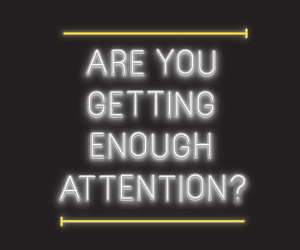 Harnessing our senses and memories in the right context and fusing it with the right content can be a powerful weapon for brands and can make a real and lasting impression, writes
Harnessing our senses and memories in the right context and fusing it with the right content can be a powerful weapon for brands and can make a real and lasting impression, writes
Clara Traynor.
Clara Traynor is a copywriter at Guns or Knives
Are you sitting still? Great. Now, without wriggling in your chair, scope out what you are touching. What sensitivities are you feeling? Think about it as you continue to read this. How do your clothes feel on you, loose or tight? Discover the pressure of the desk against your arms or your elbows; the weight of your body on the chair. Touch: it’s a pretty powerful thing.
Let’s extend this past your psychological space to the room you’re reading this in. Your environment: it’s what your mind and memory is digesting every day. It’s what you go home and mention to your other half; maybe your housemates – parents even.
But what happens when a brand constructs our physical surroundings or alters our everyday situations? The answer is simple. It’s sticky. Thomas Troch’s 2016 paper on how research can have more impact when it’s experiential states that there are four factors that make something memorable: attention, novelty, emotional impact and timing. When these combine, the result is a long-lasting memory.
Sticky can be tricky
A good experience can be sticky like honey or like a chewing gum on the bottom of your shoe. When it’s good it’s sweet, sugary magic. When it’s bad it can be a lot like E numbers, stuffed into the mix in an attempt to mask the bland taste of a weak concept.
Although often knee-deep in focus groups and trend reports, advertisers can sometimes be a little slow to catch up with the rest of the classes. Blame the algorithmic bubble we’re in or echo chambers. Whatever the name or the reason, it doesn’t really matter too much. One important word that we forget is passivity. Consumers won’t just eat up any shite that they are fed as long as we add a magic egg in there*.
Touching the masses
The desire to be a be part of something is innate. Some brands are catching on quicker than others. Airbnb’s empowered us by telling us we could “belong anywhere”. More importantly, it wasn’t just hot air. They held true to that sentiment by providing consumers with the chance of winning once in a lifetime experiences. They were more than stunts, they built strong brand equity both directly and indirectly.
A soft touch
I’m not talking idiomatically here. In an ever-changing, ever-hardening world, a soft touch here and there wouldn’t go a miss. Some say each generation is a little bit colder, more uncaring than the next. But maybe we’re just in an evolving state of how we express ourselves. Now we text or snap rather than call or meet face-to-face (god forbid). But does that mean we’re emotionless humans ready to “turn the thumb” and throw our mates to the lions at the drop of another lukewarm latte art photo? Maybe they might not have got the ‘like’ that time around but we’re a touchy feely bunch all the same.
Psychologist, Frans de Waal agrees. In his book, The Age of Empathy: Nature’s Lessons for a Kinder Society, he writes that empathy has three layers. The first is an emotional virus, that runs through a group during an event (think: 28 Days Later but replace the bloody vomiting with a warm fuzzy feeling).
The next layer has a more commonplace meaning, it’s the feeling for others when we see the situation they are in, as in: “OMG, that photo gave me the absolute FEELS.”
The final layer is what he refers to as “targeted helping”. It’s the desire to help. It’s the inner voice that says: “I see you’re struggling with something and I want to help you.’’ It’s the ability to feel the way that person or group of people does.
De Waal warns against holding the popularised Dawkins “selfish gene” too close to our chests. When we find ourselves giving into selfishness, it becomes a self-fulling prophecy. We must remember to stop and give the soft touch a go to open our hearts – even just touch.
Touched from the inside
There’s a sensation called tactile-emotion synesthesia. It’s the ability to experience specific emotions by touching specific textures and surfaces. Denim has induced feelings of sadness whereas silk has evoked happiness. Although this phenomenon is a relatively new one, the cross-talk between our senses is not. In fact, the reported cases of synesthetic experiences have been increasing each year.
OK, so we’re all not Kanye, not all of us (allegedly) have this superpower; but we can all relate to the memory of dipping those little toes in the ocean for the first time at the mild whiff of sun-cream. There’s no denying that our senses are linked to memories. It’s a fact. And, harnessing this can be a powerful weapon. It has the ability to make a brand experience something truly unforgettable. In the right context, with the right content, it can shift opinions and give us all the feels, the ones that leave a real lasting impression.
*Although failing at first attempt, Betty Crocker’s egg solution caused cake sales to soar in the 1950s.
First published in Irish Marketing Journal (IMJ September 2017)© to order back issues please call 016611660





















